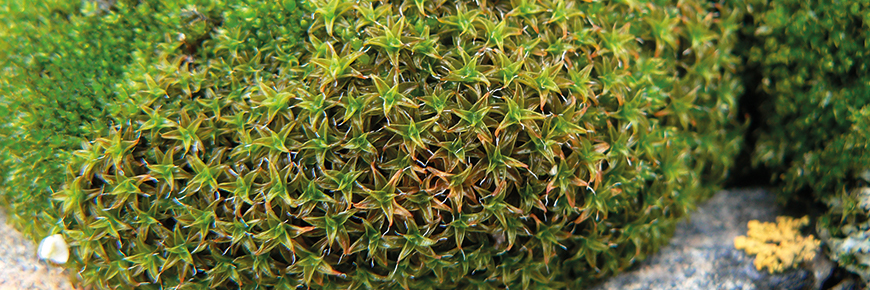
Bryophytes
Mingan Archipelago National Park Reserve
Bryophytes are a branch of the plant kingdom comprising small photosynthetic organisms devoid of real roots, so they are non-vascular plants. About 315 bryophyte species typical of temperate, boreal and arctic alpine regions are known in the Mingan Archipelago National Park Reserve. Sensitive to their environment, they are considered to be good indicators of changes in climatic conditions, as well as changes in the level of acidity and mineralization of soils and of water pollution.
Often grouped under the term "moss", bryophytes are also of great ecological importance. They can colonize bare rock, stabilize the substrate, participate in the formation of soils and humus and influence the ground water flow and the nutrient cycle. Their presence is therefore essential for the establishment of vascular plants in the boreal environment.
Peat bogs
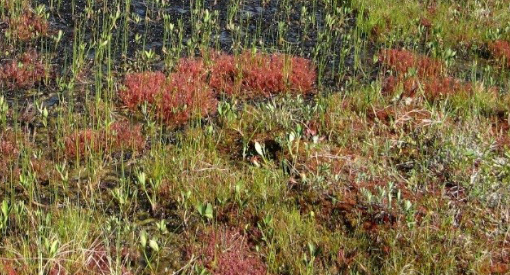
Sphagnum mosses are the main plant component of ombrotrophic peat bogs in the Mingan Archipelago National Park Reserve, but only form small mounds in minerotrophic peat bogs. Their ability to retain excess soil moisture or slow its evaporation plays an important ecological role in these ecosystems. They are also capable of modifying the physicochemical conditions of organic soil to the point of slowing down its decomposition.
In addition to a wide variety of sphagnum mosses, it is possible to observe the Long-forked Broom moss and the Bog Haircap moss in the ombrotrophic peat bogs, as well as the Yellow Starry Fen moss and the Rusty Hook moss in the minerotrophic peat bogs of the Mingan Archipelago National Park Reserve.
Boreal Forest
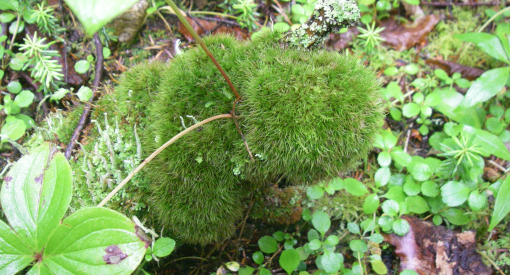
The boreal forest offers many microhabitats for bryophytes, which can form vegetation covers on the ground, on the bark of trees and on decaying dead wood. Among the most common species are the Stairstep moss, the Red-stemmed Feather moss and the Knight's Plume moss.
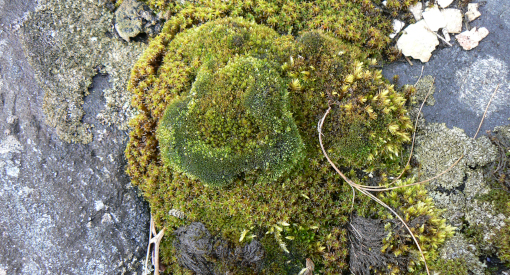
Amongst this environment, the edges and crevices of forest cliffs are particularly rich in species, because they offer an ideal combination of humidity, shade, complexity of support and protection. It is also within the forest cliffs that we find the greatest diversity of bryophytes. The Vaucher's Plait moss and the Siberian Mousetail moss are just a few of the species frequently found in these rocky habitats.
Barrens
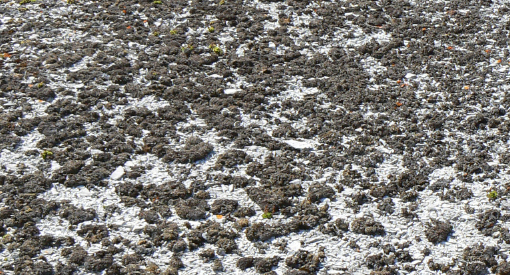
The rocky barren is a favorable habitat for the establishment and the growth of arctic alpine mosses which are very resistant to cold and able to draw nutrients even from frozen ground.
Despite the difficult environmental conditions, some species take advantage of the low floristics competition to occupy the small piles of mineral soils and form scattered groupings, such as the Rough-leaved Beard moss, the Drooping Bryum and the Inclined Iris Moss.
Shoreline
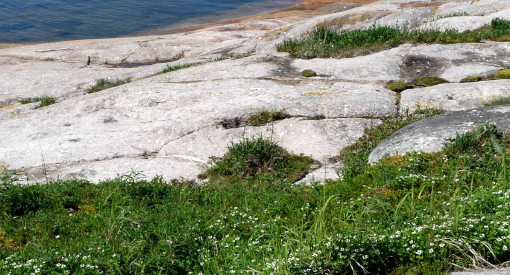
The shoreline includes very few bryophytes. Only a few specialized species, such as the Curved-beaked Beardless moss, have the necessary morphological adaptations allowing them to survive in saline wetlands. Breeding bird activities can also contribute to the alteration of bryophytes at the shoreline level.
The limestone nature of the islands in the western portion of the Mingan Archipelago National Park Reserve seems to exclude several species that prefer the more acidic and granitic substrate of the eastern portion of the archipelago, increasing the bryophytic diversity in the park reserve.
Related links
- Date modified :